Who We Are
We respectfully honour and acknowledge the southern watershed of Manido-wizaagaiaagan (Spirit Lake), Georgian Bay and Wayeseyaaguining (Shining Lake) – Simcoe and centrally Lake Couchiching waters and land that have historically sustained the lives of Wendat and Anishinaabe – Anishinaabeg including the Ojibwe, Odawa and Pottawatomi Nations, collectively known as the Three Fires Confederacy of the Anishinabek and centrally Rama First Nation the keepers of the Mnjikaning Fishin Weirs.
These sacred lands and water ways are recognized in the Robinson Huron Treaty, Williams Treaty and J. Collins Land Purchase, and are the birthplace of Feather Carriers.

What is Feather Carriers?
eather Carriers is a non-profit organization that offers Indigenous-based training to communities and organizations who wish to take up the work of promoting life and prevent suicide. These teachings are drawn from many cultures and points of view; Anishinaabe, Haudenosaunee, Mi’kmaq, Michif, and others. The structure and many of the teachings are based on the work of our founding elders, John Rice-Zaugausigay and Dr. Ed Connors-Waubenobenasi Qweqwethgun, but they are also drawn from many voices, such as Bea Shawanda and Albert Marshall. It is built on the knowledge of ancestors and as we travel all over Turtle Island, we ask for the life promotion teachings of the territories we visit to be part of our teachings.
Life Promotion is an approach to suicide that focuses on root causes and appealing to the spirits of individuals. Instead of reacting in the moment to suicidal ideation, life promotion builds those motivations to live that help individuals overcome painful and hopeless times in their lives. By developing and strengthening a sense of meaning in one’s life, and by understanding all the ways in which we are connected to life, we are able to find reasons to live.
This is a long term approach and a crisis intervention approach: Life promoters (enaadmaget wii Bimaadziyiing) can use their teachings with individuals in their day to day lives, help develop community resources that promote life, and use the teachings when individuals experience a loss of hope and purpose that leads to suicidal ideation.
“Songmaker” Jim Rice
G’Chi Odewey Jig
Feather Carriers is organized under principles of Indigenous governance and the Anishinaabe concept of the eight pointed star. The Big Hearted People are our governing circle, each member of the circle sitting at one of seven points of the star. The eighth point represents the elders. Feather Carriers has an Elders’ Circle which meets to answer questions and help settle disputes. The Big Hearted People guide the organization and set our policies.
The teachers (Gashkichige jig) and those learning to be teachers (Ozhiitaa jig) are invited to lead training cohorts as they come up. They are not obligated to teach and do so only when they feel ready.
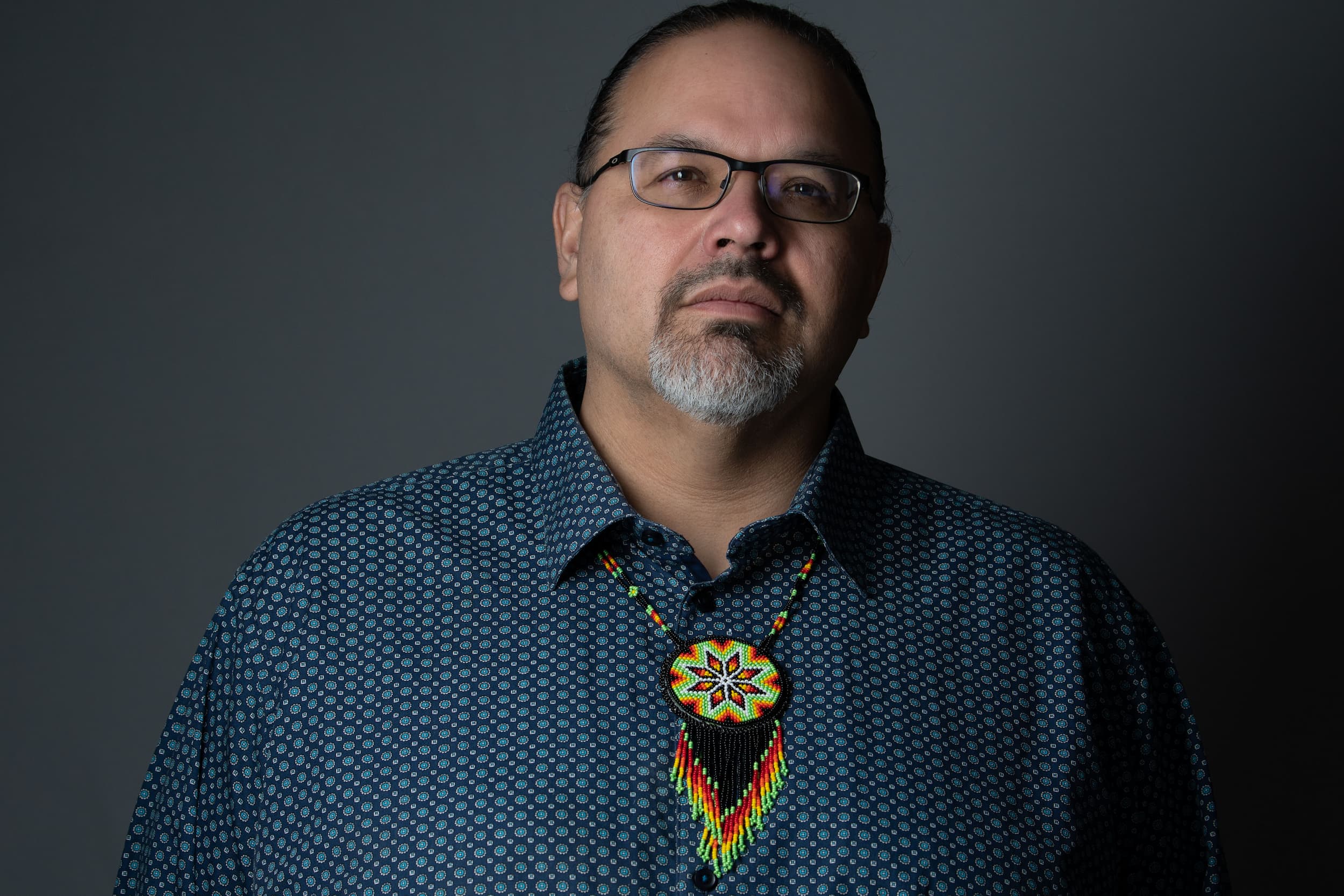
Waabengo
Morning Star
Shane Tabobondung

Asatiy Sakahikan, Gizhagate
Erin Dixon
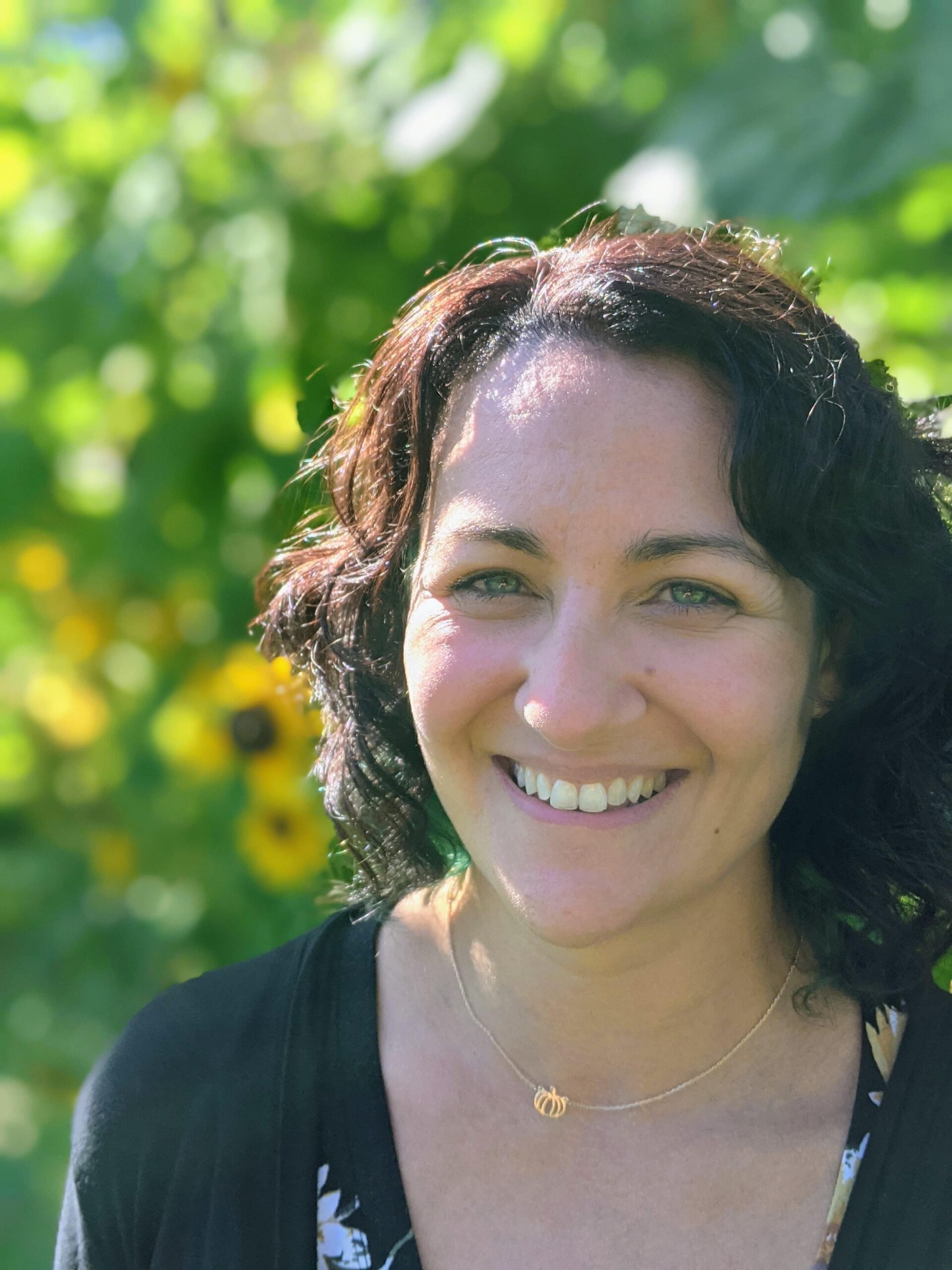
Gagigewaasay
Everlasting light
Laura Ball
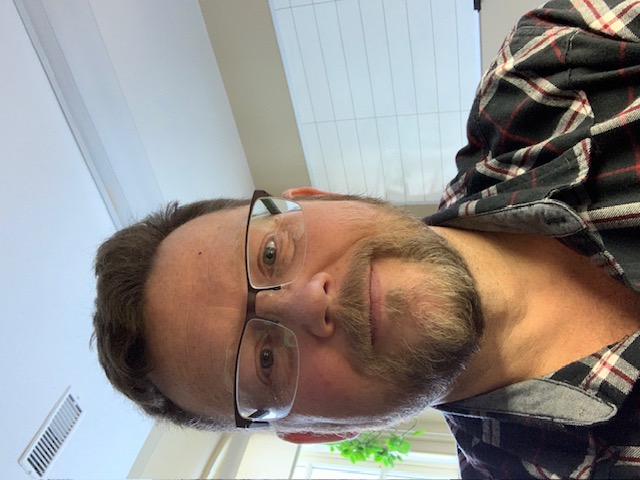
Misabii Kong (Iron Warrior)
Nick West
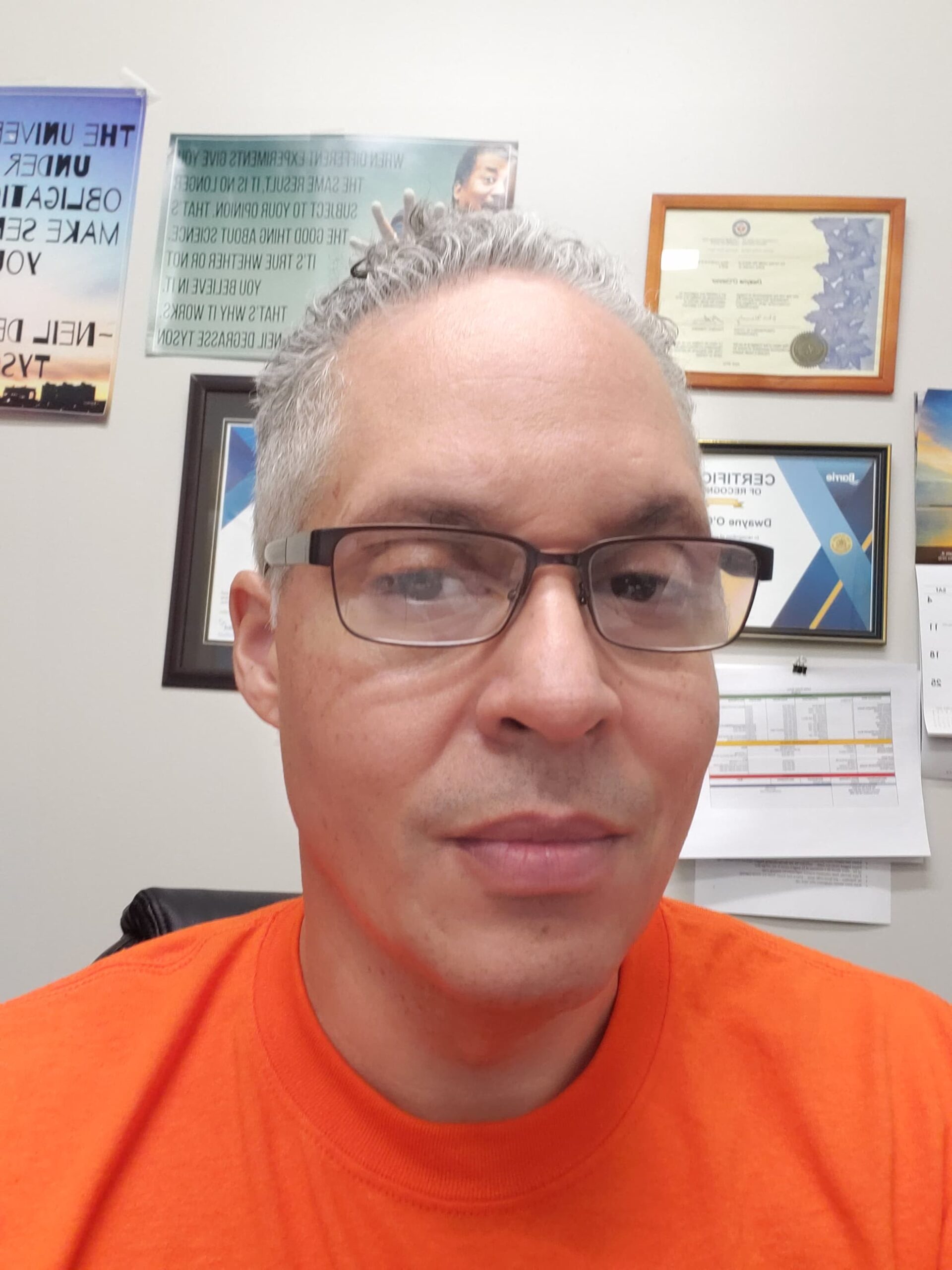
Tomgizette Nene
Man Who Fights With His Heart
Dwayne O’Connor

Mishkwaabimiizh mashkiki
Red Willow Medicine
Natasha Bascevan
G’chi Ayaa’aa/Great Beings/Elders’ Circle
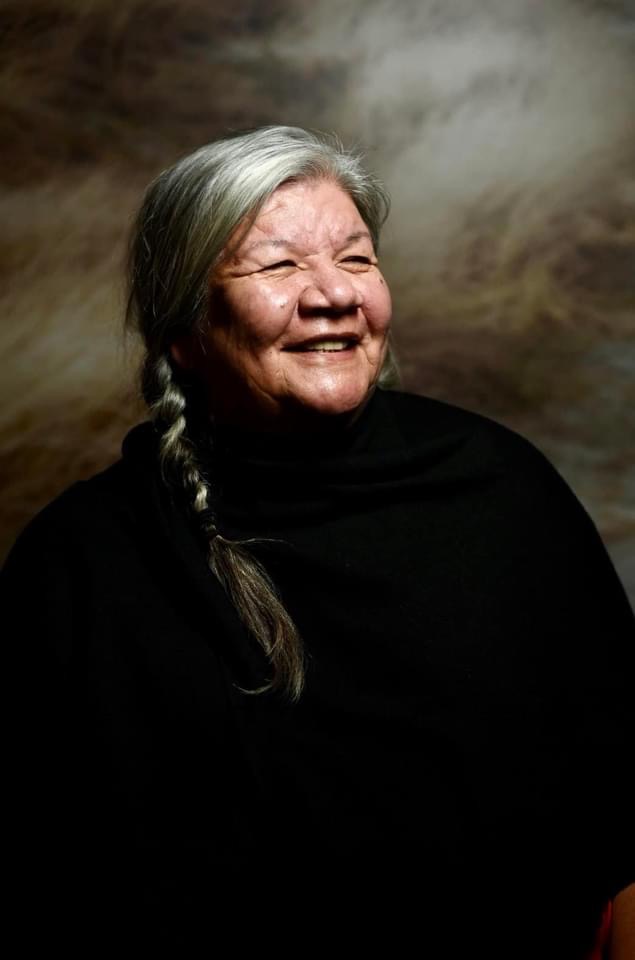
Donna Naughton
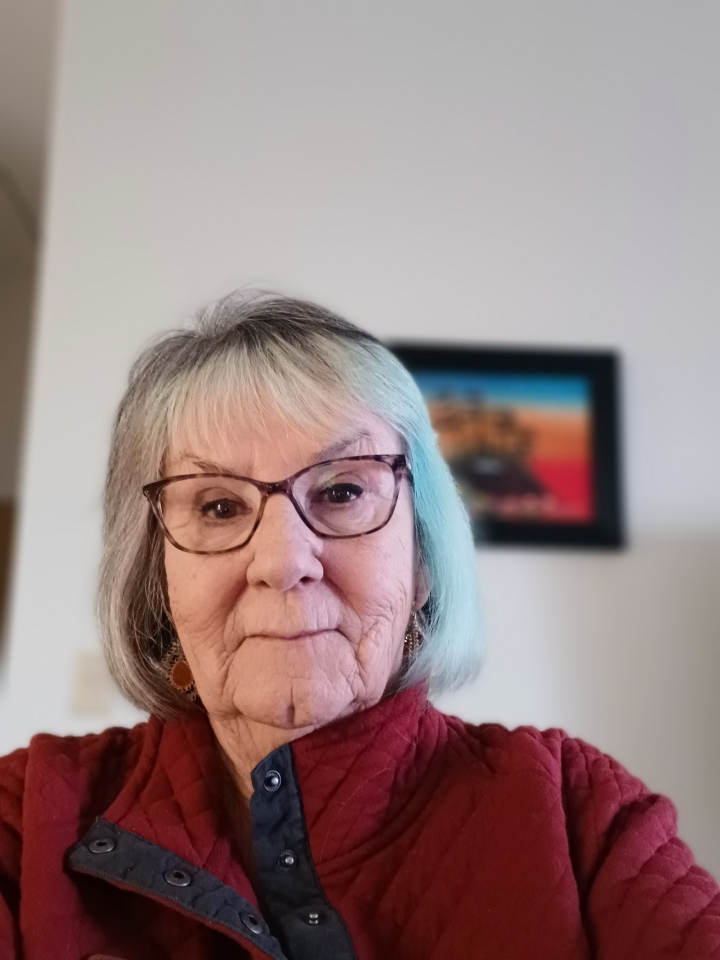
Louise Lavallee
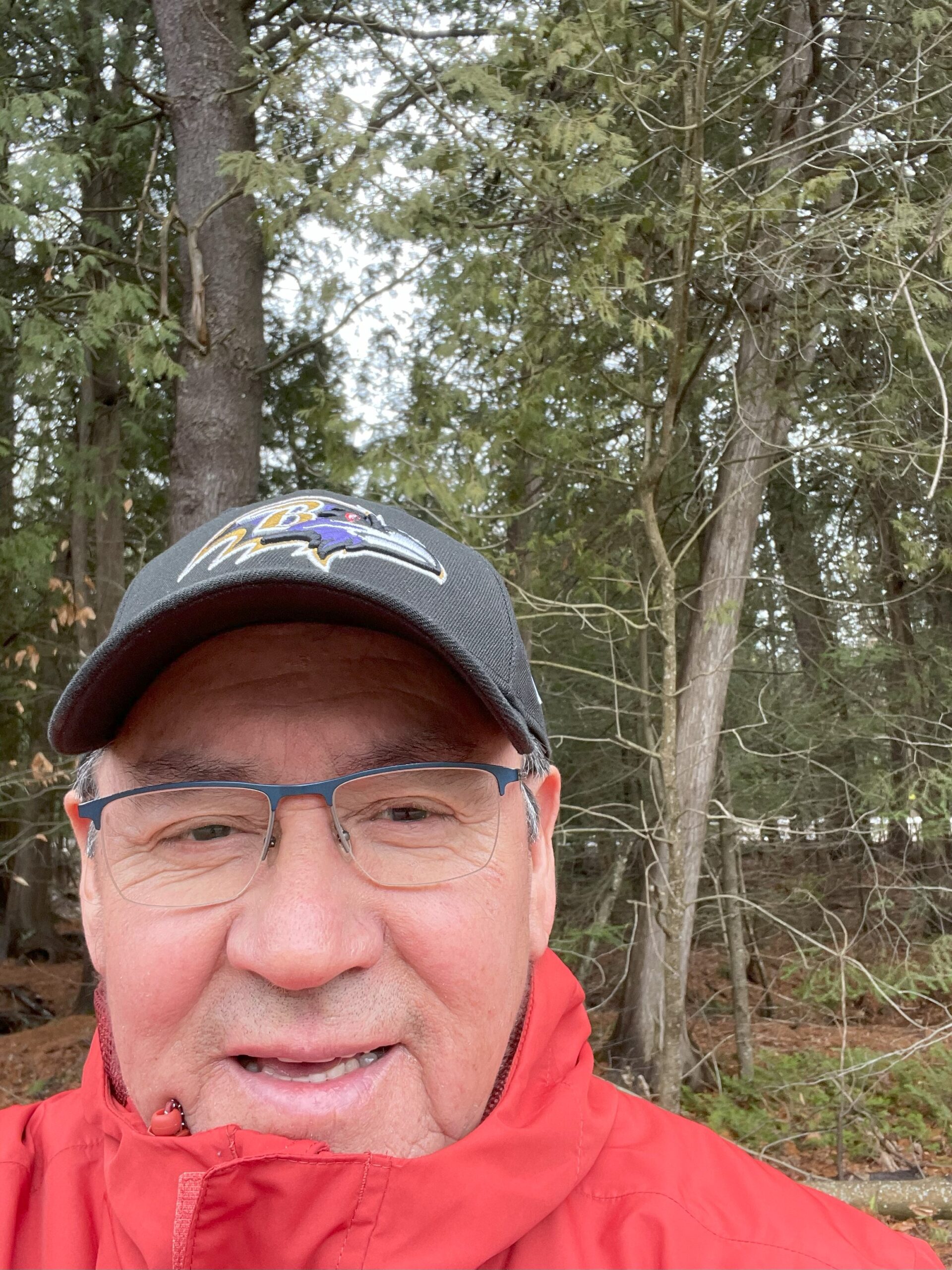
Hilton King
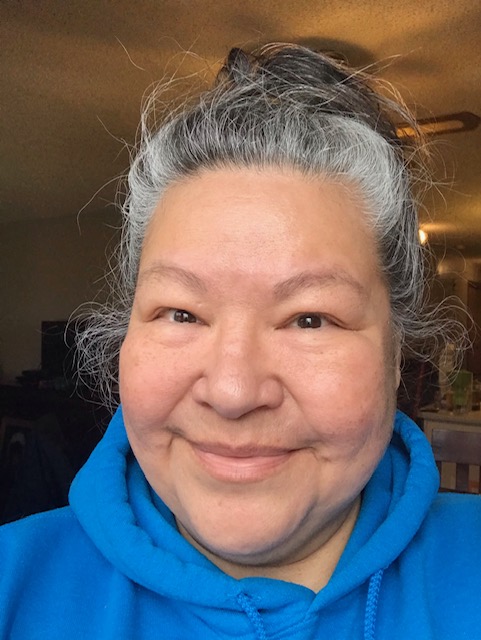
Lyn Marie Manitowabi
The Team
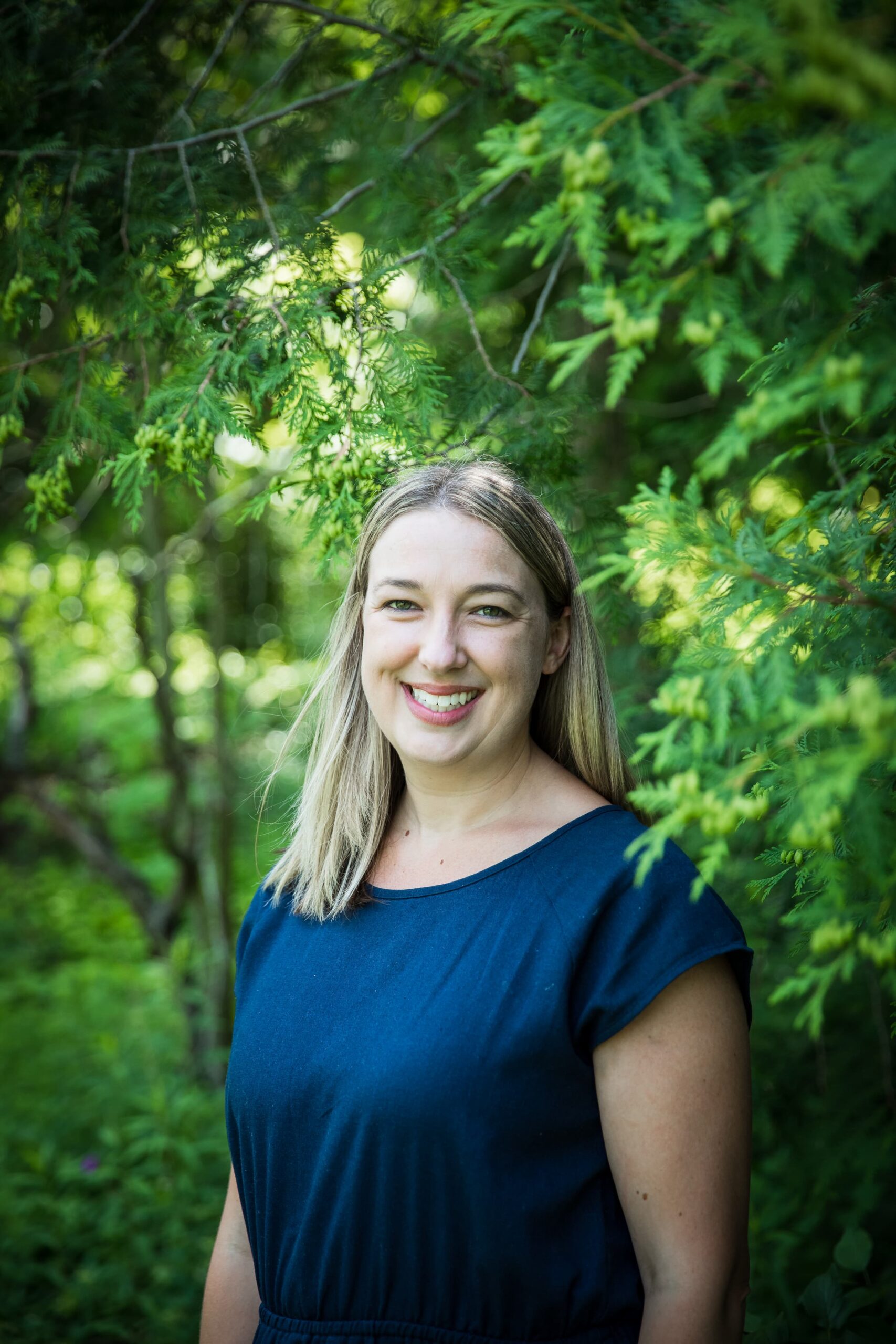
Christie Wilson
Chief Administrative Officer
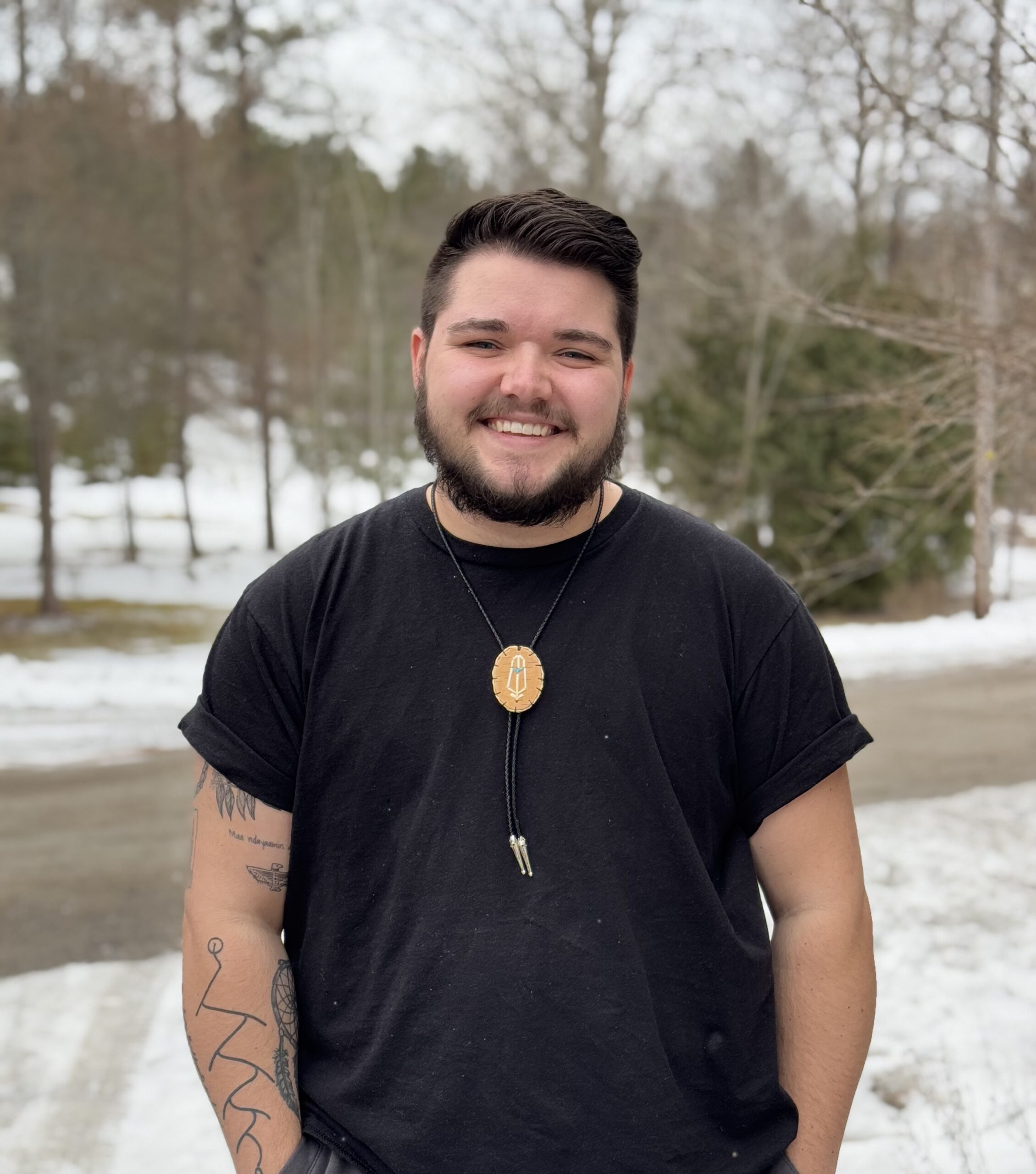
Connor Lafortune | G’chi Waabshka Mukwa
Program Manager
The Origin of Feather Carriers from the Elders
FOUNDER DR. ED CONNORS
Wabeno Benasi Qweqwetchgun, Dr. Ed Connors: Elder
“The way I usually tell it is that John and I were doing work separately around suicide prevention and both of us has had different experiences with different forms of suicide prevention, different training.
In my case, it was going way back to about 30 years ago, when I began to work with Elder Alex Skead with the sacred circle, with the request of the Chiefs from Treaty 3 region, where we were asked to come and help with what we call today a ‘suicide epidemic’ meaning simply that many of the people, particularly the young people, were either attempting to take their lives or had taken their lives. It was the Chiefs that came to the conclusion that it was too much and knew something needed to be done to change what was happening. And that’s when Alex and I were asked to join together and I returned to work in that region with Alex, on what became known as the ‘sacred circle providing a way of life’. Alex named it that in Anishinaabemowin and then translated it. And when he gave it that name, it just seemed really right to us, because we had others who had come to join us and work with us. And so for over five years I worked with Alex on what we called the sacred circle providing a way of life, which was based on understanding how we needed to help our young people to be able to answer some very simple questions. Art Solomon actually stated this himself, when he talked in one of his teachings about identity, and how the importance of knowing who we are, and the way he put it at that time was, “You can’t know who you are, if you don’t know where you’ve come from.
If you don’t know where you come from, and you don’t know who you are, then certainly you don’t know why you’re here and where you’re going.” What Alex did in our work together was help us understand the importance of that message. And we learned that through the young people as we went out and asked them about suicide and about taking their own lives and what they understood and knew about it, and why they believed that it was happening, why they were thinking of death. It was through that, and through speaking with the Elders as well, that we clearly came back to the understanding that what Art had said was true, that the central thing we needed to do if we were going to help young people connect to life, and not be encouraged to think about moving towards death, that we needed to be able to help them to answer those questions to know who they are, and where they come from. And then they could vision into a future. And so that’s what led us to do work in the sacred circle providing a way of life, which was based on the community there, we worked at Powell Island, and brought the youth together with the Elders and did teachings, central teachings that they hadn’t been doing for a long time, and the young people had not been hearing, and they’re all done in the language. Fortunately, in that area the language had maintained, and the young people were being raised in their homes and their families had their language. So we were able to do the teachings and speak and do it in the language.
So what it taught me there, because I left from there, and I came south to work here. And I came with that understanding, but it was kind of dormant, I didn’t really fully understand it and its importance until John and I started to say, this what we’re doing and suicide prevention right now, it is not enough. The suicide prevention ideas in terms of preventing death have value. But what is most important is that we focus on promoting life and helping young people to connect to life. And doing so through the understandings of those questions that we now understand is the four central questions, which are: Where do I come from? Who am I? Why am I here? And where am I going? And that’s just an extension, really, of what Art had spoken about. And those are central questions that we know now have been for all people through all time, essential for living life well.
So when John and I sat down, and we shared with each other and that something more was needed, and what was that something more? And that’s when John and I shared some of those thoughts, and then John start to speak about the Miikaans. And so you can pick up there John.”
FOUNDER JOHN RICE
Zahgausgai, John Rice: Elder
“So we both worked in this area for a long time together, but not together. The way I like to think of it is, we listened to survivors. We had known people who had experienced unnatural premature death, they had those stories. So when I was thinking about it, I was thinking that Feather Carriers would be the voice of those people. The voice of the people who can’t speak for themselves now. We came together with this understanding, both of us had to put suicide in a place for ourselves. I know for me, that was a big thing for me was to finally realize, we are not going to eradicate suicide. We have a teaching that says, it’s been here with us since the beginning of time. So it’s too big, just like all other ways of dying, murder, these things we’re experiencing now cancer, type two diabetes, there are many ways that we die. We talk about that. We know, we know you can’t scare someone into living: ‘suicide’s a sin – you would go to hell.’
Even though we hear those consequences to suicide, people still suicide. So, it’s not stopping. So the more we talked, we worked through that process ourselves and we began thinking about the terms of life promotion. I think before that we just talked about changing how we talk about it (suicide), changing how we talk about life: getting away from this, scaring people who are killing themselves. And what do we do then? – let’s talk about life. Turn it into a conversation about what life is. So we made that transition, that kind of conversation.
We were talking about that, then it became an awareness. You know, like, you hear that phrase “changing the dialogue.” That’s what we need to do with our people in our communities. Whenever we have social problems, we have to itemize what’s wrong with our communities, to get dollars to address it. So it’s a negative source, we always have to talk about our problems in order to get money to fix our problems. So that’s what kind of structures our thinking in our communities into that negative side. I know, it’s very hard to fix the government to reinforce positive things, because that’s not what the government is programmed to think – so we talked about that.
When I was young, my step-dad said that a man is in his prime from 45 to 75. I believe that’s the way you know, they’re not just stories from the past. Our ways are with stories from the past. So I believed him and thought “that’s what I’m going to do.” And I’m in my prime right now and it will last until I’m 75 – and I will stretch it longer than that! So my belief is, our stories aren’t just stories, they are accounts of our lives before Contact.
And then what happened one time, Eddie Benton knew that I was keying into the Miikaans teaching and reconstituting when you go through the initiation. It is the second teaching of the initiation that you get to see and hear about the Miikaans. But for me, I heard a lot more than was spoken from the teaching itself. That’s really interesting because the first year I saw the Lines In The Sand teaching and saw the lines. In the second year I saw the spaces in between the lines, that’s the only way to describe it, spaces, so in the third year I saw even more but I still haven’t figured out why.
So, the Miikaans teaching became very important to me, especially since in a vision I received the symbol here of the seven stages of life, so that’s what became my teaching to learn in this lifetime. So, we talked about elements of the Miikaans and a lot of it was we were to go back to our cultures – Haudenosaunee, Anishinaabe teachings that’s what influenced Feather Carriers. So what happened in the Miikaans teaching outside of ceremonies one time and Eddie talked about, he said, “you know, we live long enough to see Halley’s Comet three times in our life, so we used to live and be up to 130 hundred to 150 years old.” He gave that teaching, that Miikaans teaching.
So, you know sometimes when we don’t grow up with something, it’s like you’re not convinced it’s truth – the knowledge – you kind of need to be convinced.
Anyway, not too long after that I looked after this man in my community, he liked his wine that was his reputation. So there at the end of his life he needed someone to look after him, so I looked after him, checking in on him, sometimes I would find him on the floor and he couldn’t move so I would pick him up and give him a bath and look after him that way. So, he was really old fashioned, he never took anything for free, he always paid back, and he knew my thirst for knowledge. So, he always gave me a teaching and he always gave me knowledge. One day in the fall we’re driving into town and there was this thick fog, he says you see this fog, is telling you the first snowfall is going to be like this, big fluffy snowflakes everywhere is what he said.
So, sure enough that’s what the first snowfall was like. So, he would say things like that. Things to watch for, one day we’re driving and he says you know I carry a sweat lodge, but I can’t do it because I drink too much. I can’t do that sweat lodge. I didn’t ask him for the sweat lodge. But one day we’re driving into town and right out of the blue he says, hey John you know we used to live long enough to see Halley’s Comet three times, and I just about drove off the road because here’s this guy right from my community, grew up in our community and wasn’t traditional, so to speak even though he had a great amount of traditional knowledge, here he was validating what Eddie said. I took this as validation of that teaching, you know ordinary people are saying this, and if ordinary people this than it must have been the real thing. You know our teachers try to teach us things, they try to teach us – they try to give us more knowledge, but this came right from a good natural source.
Some of these memories that are foundational to Feather Carriers are our knowledge about the way we used to be, how we used to live, those are truths, when someone said something about the way it was, as the truth, and not just as you know these beautiful stories about the past, all the ways that we talked about life.
So, that’s why Miikaans became a big part of Feather Carriers. We would tell people that the main thing about the Miikaans is that it’s not a secret teaching, it’s not a secret because you just need to tell someone your life story, telling me the Miikaans, telling you were born, you went through puberty, because it’s a natural teacher, not a secret.
I know when I first started talking about the Miikaans I spoke at an international gathering, people there were really concerned for me, one guy he came up and said you know this video is going to be shown in Canada as well, and you’re basically just giving this away, and I said no, this is general knowledge, it’s about life. Now if I told a sweat lodge teaching, and now go and do the sweat lodge, that would be giving something away.
The Miikaans, it’s not a mystery either, you know before we had so much social media, internet, television, radio, it was common for many families to sit around and listen to the Elders or old people talking about life, talking about Aunty, grandma, even coming from Europe and those kinds of stories. Those are the Miikaans, that’s what we need to remember, each one of us is a Miikaans, so I’ve done that I have learned in the lodge about the Miikaans, the concept of fasting for some knowledges, but my main knowledge has come from listening to peoples stories, and when Ed and I talk about the storyteller, Ed’s an awesome storyteller, and I am actually a listener, I love listening to stories, listening to the Miikaans teachings. So, that’s how we got that element of that dynamic, the storyteller and the listener, all stories are true.

